Fiber lexicon
State-of-the-art technology for the best quality is only possible with an abundance of high-quality original materials
Wool & virgin wool
Alongside goats, sheep are among the oldest farm animals known to mankind and were domesticated around 10,000 BC.
in the region of the “Fertile Crescent” (northern Syria, Lebanon, Israel, Palestine, Jordan) – initially, however, only for meat production.
The beginning of the use of sheep wool cannot be precisely dated historically, but it goes back over 5000 years.
Around 2500 BC
the advanced civilizations of Egypt and Asia Minor already differentiated between wool and hair sheep.
In Europe, wool fibers were initially processed as a mixture with linen.
Due to its properties, however, wool quickly developed into the predominant textile fiber in Europe.
However, today’s sheep breeds used for wool production are the result of a breeding selection process lasting around 5000 years, during which the original, very coarse and shaggy coat of the animals was transformed into fine, easily processable wool hair.
The best example of this is the merino sheep: The predecessors of this type of sheep were brought to Spain by the Berbers in the 12th century.
The precursors of this type of sheep were brought to Spain by the Berbers around the 12th century and developed there by the Spanish into producers of high-quality wool.
Until the 18th century, the Spanish held a monopoly on merino wool, and the export of the animals was banned by the Spanish royal family on pain of death, allowing them to trade in so-called “Spanish wool”.
In the second half of the 18th century, the first Merino sheep finally arrived in the German regions.
Today, Merino sheep are the most common breed in Germany, accounting for almost 30% of the total, and in Bavaria they even make up around 70%.
European settlers eventually also brought Merinos to Australia and New Zealand, enabling these countries to develop into the world’s largest wool producers.
Together with China, they account for around 50% of global sheep’s wool production.
Other important producing countries are South Africa, India, Argentina, Uruguay, Sudan, Iran and Great Britain.
These countries, with the exception of Great Britain, are ideal for the production of fine, high-quality wool, as they have a mild climate which counteracts the formation of coarse, weather-resistant wool.
In Germany, sheep farming reached its peak towards the end of the
18th century, with around 30 million animals being kept solely for wool production.
In Baden and Württemberg alone, there were
In the 19th century, there were almost 900,000 sheep in Baden and Württemberg alone – more than in Spain and France combined.
However, due to cheaper production opportunities in New Zealand and Australia and the demand for finer wool, wool production lost its competitiveness.
Today, only around 2 million sheep are kept in Germany, most of them as a hobby.
Due to this wealth of positive properties, wool is used in a wide range of applications: in clothing, as upholstery fabric, for blankets or as filling and insulating material.
Within wool, a distinction is made between sheep’s wool, new wool and lamb’s wool.
Shearing and lambswool is wool that is obtained from living, healthy adult sheep or the first shearing of lambs.
As a result, lambswool is even finer and softer than new wool.
Sheep’s wool, on the other hand, is an umbrella term that includes not only new wool or lambswool but also recycled wool and wool from sick or dead animals.
Here in the Forst spinning mill, however, only wool obtained from live animals is used.
Like all animal fibers, sheep’s wool is also a protein fiber and therefore regulates temperature, retains heat and is also difficult to ignite.
Wool fibers can absorb more than 30% of their own weight in moisture without feeling wet and thus ensure a pleasant wearing comfort.
Wool is also a breathable fiber with dirt and water repellent properties.
Wool is also easy to clean and care for due to its crease resistance and its fiber.
It also absorbs odors due to its protein structure and has an antibacterial effect.
Due to this wealth of positive properties, wool is used in a wide range of applications: in clothing, as upholstery fabric, for blankets or as filling and insulating material.
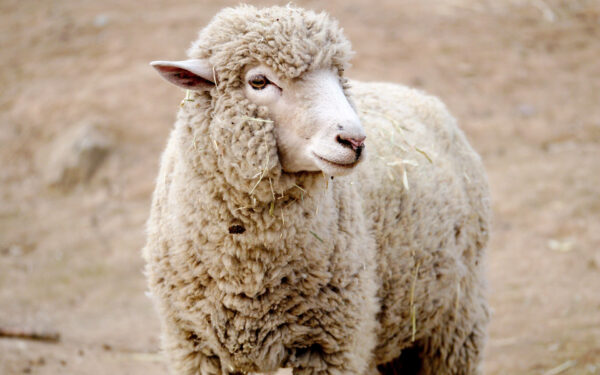
Alpaca
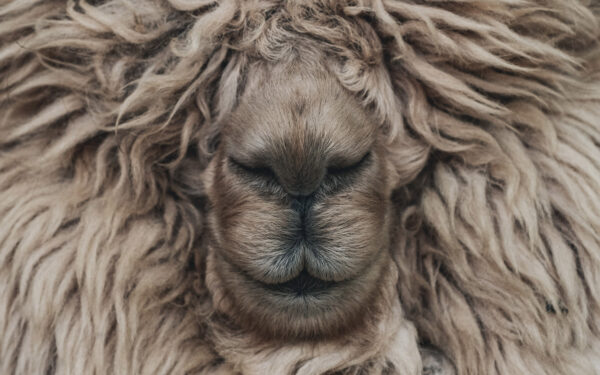
Alpacas originally come from the South American Andes and are closely related to the llamas that also live there.
The Incas began domesticating alpacas over 3000 years ago for their wool.
At that time, however, alpaca wool was a privilege and reserved for rulers only.
In South America, it is therefore also known as the “fleece of the gods”.
Even today, alpaca, along with silk and cashmere, is still one of the most precious and expensive wools.
Alpacas are basically divided into two types: Huacayas, with very fine and curly fibers, and Suris, with smooth and curly fibers.
Alpaca wool is mainly produced in South America, but the demand for alpacas is also growing steadily in the DACH region.
The animals are shorn no more than once a year, with the best and finest wool coming from the shoulder and back fur.
Up to six kilograms of fiber can be obtained per animal – however, only around half is usually suitable for further processing.
The wool can come in shades of white, beige, brown, reddish brown, grey or even black – hardly any other animal has such a wide range of colors.
Alpaca is very fine-fibered and can grow up to 20 cm long.
The fiber is hollow on the inside and therefore has excellent thermal properties and a low density.
It also has a silky sheen, which is retained even after dyeing.
The fiber is also dirt and odor repellent and has antibacterial properties due to its low wool grease content.
It is therefore ideal for allergy sufferers.
Due to its high wearing comfort, alpaca is mainly used for the production of clothing.
It is used to make scarves, sweaters, plaids, socks and ponchos.
Alpaca also has an antibacterial effect, which is why the fiber is also very suitable for allergy sufferers and is therefore also used by manufacturers for comforters and pillows.
Angora
Angora wool is made from the hair of the Angora rabbit.
Together with the fox and dwarf fox rabbit and the Jamora, it is one of the long-haired breeds.
The rabbits were introduced to Central Europe by English sailors around 1700.
Originally, it comes from what is now Turkey, from the province of Angora near Ankara.
This also gave the breed its name.
Angora rabbits are characterized by their continuously regrowing hair, which forms the basis for industrial processing.
For this reason, Angora wool can be obtained about 3-4 times a year.
This is done by shearing or combing.
Even with small animals, up to 1000g of wool can be obtained per year.
The wool can also be used to determine where the rabbits were bred, as different types of hair structure have been developed depending on the region.
In Switzerland and France, for example, the focus is on coarser structures, while in Austria and Germany the finer, and therefore higher quality, structures are preferred.
However, the main country of production for angora wool is China – fibers from there should not be used for animal welfare reasons – the fibers are torn out of the animals.
Angora fibers are hollow on the inside, which is why they can store heat particularly well.
They are therefore often used for winter clothing.
The fibers are also comfortable to wear as they absorb up to 60% of their own weight in moisture.
The fine fibers of the angora rabbit are mainly used in the clothing industry for sweaters, cardigans and scarves, but also for blankets and bed linen.
Angora is also said to have a healing effect, for example on rheumatism.
This is why angora wool is also used in health underwear such as lumbar or back warmers.
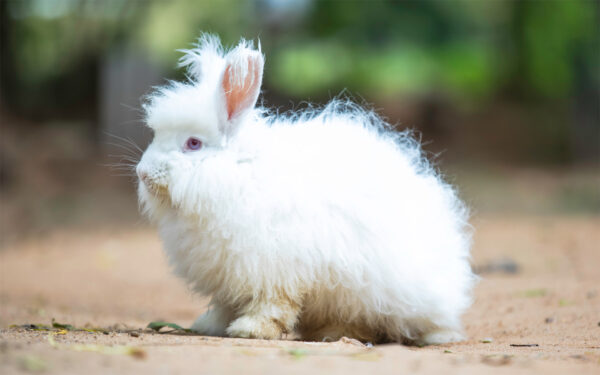
Camel
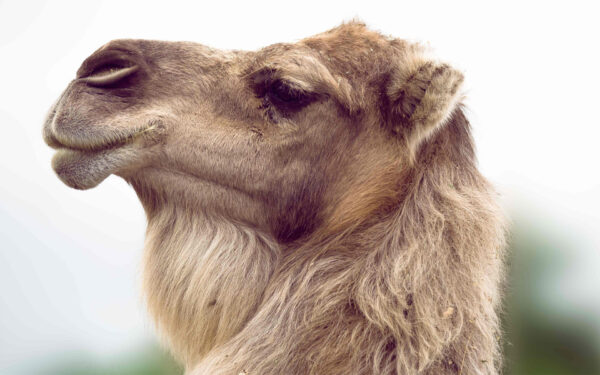
Camel hair is the term used to describe the camel’s coat, which consists of the top coat and the fluffy, soft downy hair, the undercoat.
A distinction is also made within the species between camels and dromedaries.
Camels originally come from Asia (especially Mongolia and western China) and dromedaries from the Arabian regions.
Their habitat is semi-deserts and deserts as well as dry steppes.
Due to their ability to adapt to extreme weather conditions and their use as livestock and draught animals, the animals are now also used in Africa and Australia.
While the wool of the dromedary is rather rough, that of the camel is very soft.
As camels are exposed to a very harsh climate in their countries of origin (temperatures from -30°C to 40°C), their wool is very resistant and, like alpaca wool, is considered indestructible.
Unlike all other wool suppliers, camels do not have to be shorn to get their fibers.
Camels change their coat once a year to prepare for the change of season from winter to summer.
They shed excess fur, which can then be collected, cleaned and processed.
In this way, around 5-7 kilograms of wool can be obtained per camel.
The color spectrum of camel wool includes yellowish, reddish and brownish tones.
The wool of dromedaries and the top hair of camels are used to make carpets due to their coarseness.
The fine camel underhair, on the other hand, is used for clothing but also as a filling for comforters.
Due to the animals’ habitats, camel hair warms or cools as required and thus ensures a pleasant, constant body temperature.
In addition, camel fibers are hollow fibers, which gives them excellent moisture management.
Similar to angora wool, camel hair is also said to have an anti-rheumatic effect.
Although camel wool is not used quite as frequently as cashmere, the raw prices of the two types of wool are almost identical.
Up to 200 euros per kilo of raw wool can be achieved.
Cashmere
Cashmere wool is a particularly fine, soft and light natural fiber that belongs to the noble hairs.
It also has the highest heat retention capacity of all natural noble fibers, is self-cleaning and breathable.
Due to these properties and its natural scarcity, it is one of the most valuable fibers of all – the price of this coveted fiber is sometimes over 100 euros per kilogram of raw cashmere.
By comparison, the price of raw virgin wool (from sheep) is between 4 and 17 euros per kilo, depending on the fineness of the fiber.
The fiber is produced by the cashmere goat, whose name is derived from the Kashmir region in South Asia.
The wool can be combed from the goat’s undercoat at the end of winter.
The natural color palette of the fibers is limited to white, grey, black and brown.
However, like all other wools, cashmere can also be dyed in a wide variety of colors.
The yield per animal is around 150g – roughly the amount needed for a scarf.
However, cashmere is often blended with merino wool in order to obtain a more durable and cheaper material for further processing.
Today, Mongolia, China and the Central Asian highlands are the most important producers of wool.
Here in the Himalayas and the Mongolian steppes, temperatures of up to -40°C prevail – the prerequisite for the goats to develop the coveted downy hair.
Due to its characteristics, cashmere wool is mainly used for clothing: sweaters, scarves, hats and even blankets impress with their unmistakably soft and warming feel.
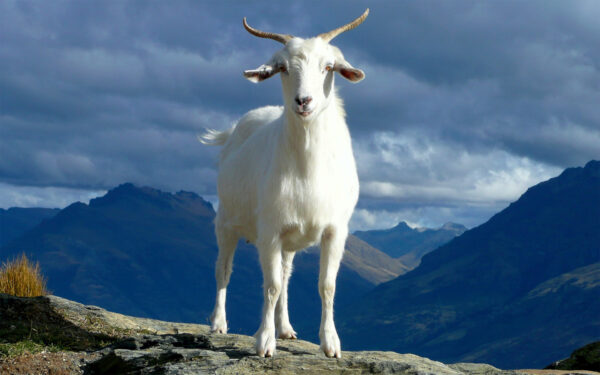
Polyamide
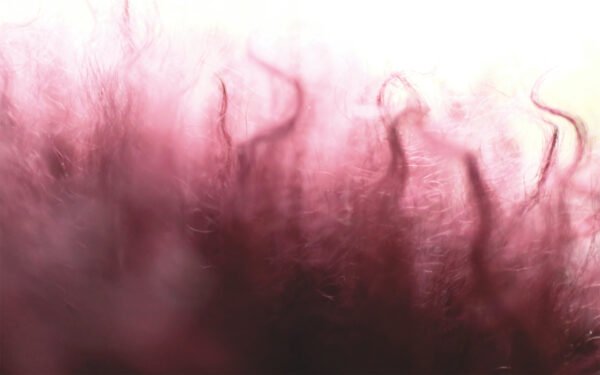
Polyamide is a chemically produced synthetic fiber based on crude oil, in contrast to the animal protein fibers found in nature.
The fiber was developed in the first half of the 20th century, around the same time in Germany and the USA.
However, polyamide is not only used as a fiber but also as a plastic, processed as injection molding.
For production, the raw materials are converted into granules in chemical processes.
This is then transformed into a viscous spinning mass by heating.
The polyamide filaments (a filament is a continuous fiber) can then be produced using the melt spinning process.
The desired properties of the fiber can be predetermined by adding so-called additives to the spinning mass or by the shape of the spinneret (different cross-section).
A distinction is made between polyamide 6 (Perlon) and polyamide 6.6 (nylon) depending on the raw materials used.
However, the two fibers hardly differ in their characteristics.
Polyamide fibers are thermoplastics.
This means that they can be heated and shaped as often as required.
After cooling, they retain the previously formed structure.
Polyamide fibers are generally very hard-wearing and resistant to abrasion.
They also have high elasticity, low density and are easy to care for.
Due to its properties, the fiber is used as a lining fabric in the underwear and sports sectors.
Polyamide is also used in backpacks, bags, tents and technical fibers and fabrics.
It is also often used in blends with wool.
Silk
Silk is a very fine, animal fiber that is obtained from the cocoons of the silkworm, the larva of the silk moth.
The fiber originally comes from China, where it was already being used to make garments around 3000 BC.
Silk then made its way from China to Europe in the 3rd century.
The resulting trade between Europe and Asia gave the world’s most famous trade route its name – the Silk Road.
For a very long time, silk was an absolute luxury good that stood for wealth and luxury and which only the richest could afford.
For this reason, the monopoly on silk production was maintained in China for a long time.
The Chinese were forbidden to take silkworm eggs or caterpillars out of the country on pain of death.
This monopoly was only broken around 550 with the start of silk production in the Byzantine Empire.
From the 12th century onwards, Italy finally became the leader in the production of European silk.
China is still the main producer of silk today.
Other important producing countries are India, Japan and Brazil.
When the time comes for the silkworms to pupate, they produce a silk thread in their mouths, which they wrap around themselves in large loops and up to 300,000 turns.
This thread is very fine, long and uninterrupted and can reach a length of up to 4000 meters.
It is called filament.
This is a unique feature of silk, as it is the only natural fiber in filament form.
Silk is mainly divided into cultivated and raw silk.
To obtain cultivated silk, silkworms are used that have been specially bred by humans for silk production.
Before the caterpillars hatch and bite the cocoons, the cocoons are treated with hot air, hot water or steam.
This leaves the filament undamaged.
Three to eight filaments or cocoons are reeled together (unwound) and glued together using the silk glue.
This creates the silk thread.
To finally achieve the soft feel and the typical “silky” sheen, the silk must then be degummed, i.e. the silk glue must be removed.
Approximately 16,000 cocoons must be processed to obtain one kilogram of silk.
Wild silk, on the other hand, comes from wild butterfly species.
Here, the cocoons are not treated with steam so that the butterflies can hatch.
However, the silk thread filament of the cocoon is damaged in the process.
During the weaving process, the shorter threads are brought back together, which results in the formation of the irregular and nub-like surface structure typical of wild silk.
Another difference between cultivated and wild silk is the thread thickness, which is slightly thicker in wild silk.
However, there is no difference between cultivated and wild silk in terms of their properties.
Silk has a temperature-regulating effect, is very stretchy and can absorb up to 30% of its own weight in moisture without feeling wet.
Silk is also quick-drying and crease-resistant, dirt-repellent and relatively insensitive to external influences.
Due to these characteristics, silk is mainly used in the high-end clothing sector, including for shirts, blouses, ties, etc. Silk is also used for nightwear and underwear, although this is now a niche market for silk and is only used for luxury brands or eco-textiles.
However, silk is often used as a blend in the textile industry.
Outside of the clothing sector, silk is often used as a filling for comforters, usually in the form of wild silk.
However, silk is also used in admixtures in other home textiles, such as curtains.
In its pure form, however, silk is only used in the luxury segment of the interior design market.
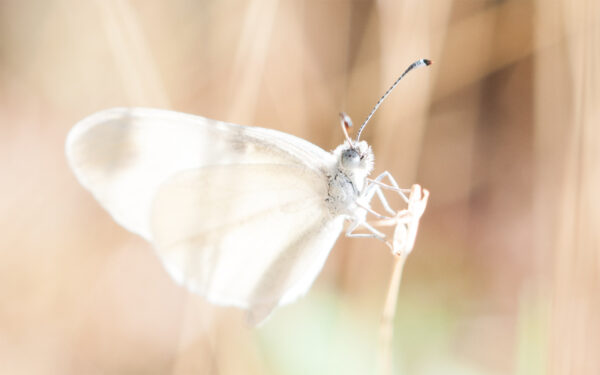
Yak
Yak wool is a fine hair obtained from the coat of the yak, an Asian cattle species.
Yaks are mainly native to the Himalayas (especially China and Tibet), Mongolia and southern Siberia.
In addition to its characteristic shaggy coat, it is above all the yak’s beefy build that makes it stand out.
With a weight of over a ton, a length of more than three meters and a shoulder height of around two meters, the animals are an impressive sight.
However, the main focus of yak farming is the production of yak milk and yak meat.
Like yak leather, yak wool is more of a by-product.
For some years now, however, the production of yak wool has been driven forward through targeted breeding.
There are now around 13 million domesticated yaks, while wild yaks are hard to find and have been an endangered species since 1996.
The special thing about yak fur is that it consists of several layers, which protects it against the extreme cold of its habitat.
This is not the case with any other cattle species.
The hair layer consists of an upper, firm and long top coat and the fine and spinnable undercoat.
This is also known as fine wool or down.
Yak wool is obtained through a combination of shearing and combing.
As the yaks lose their wool at the beginning of the summer season, they have to be shorn beforehand.
A few weeks before the planned shearing, the shepherds comb out the animals so that not too much fine wool is lost.
The fine wool of white yaks, also known as kulu, is particularly valuable as it is easier to dye.
Between 0.3 and 3 kilograms of coarse wool and 0.4 to 0.6 kilograms of fine wool can be obtained per yak per year.
Around 1000 tons of yak wool are produced worldwide, half of which comes from the north-east of the Tibetan highlands in the Chinese province of Qinghai.
Similar to cashmere, yak fibers are very voluminous and dense and therefore have high heat retention properties.
It warms even at temperatures well below 0°C and can absorb up to 30% of its own weight in moisture without feeling wet.
Although yak wool is very fine and light, it is still very robust and hard-wearing.
Fine yak wool is mainly used to make knitwear and home textiles, such as blankets, and is very popular in Europe due to its pleasant wearing properties.
However, the fine wool from young animals is even softer and more comfortable.
Coarse wool, on the other hand, is used to make ropes and tents.
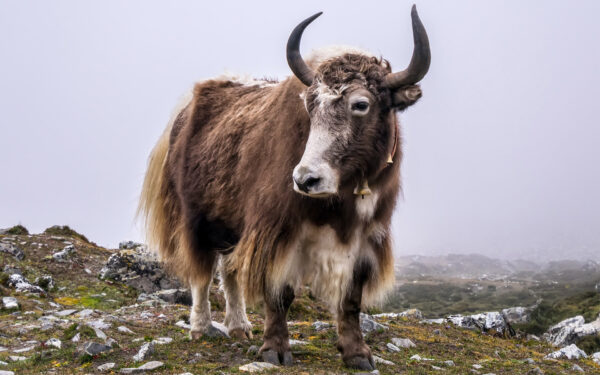
Sable
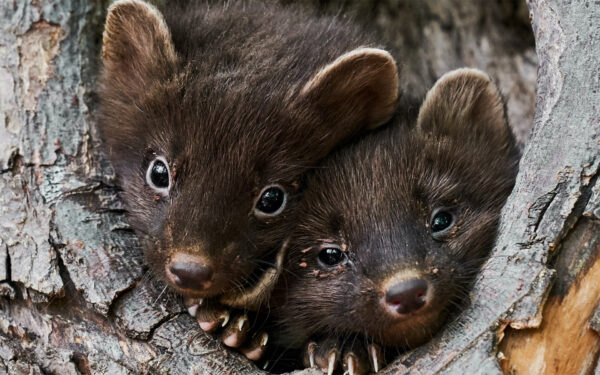
Sable is a very high-quality fur that comes from the animal of the same name.
It is also known as Siberian or Russian sable.
The sable is a species of Siberian marten that is mainly found in the Asian region of Russia.
The fur of the animals is about 35-50 cm long and is the finest and densest that nature has produced.
It comes in shades ranging from light brown to blue-black.
The Russian sable must be distinguished from the American spruce sable, which is also known as the true sable.
The fur of the spruce sable is also of very high quality, but cannot compete with the fineness of the Russian sable.
Sable skins have been traded as treasures for over 1000 years and used to make coats, hats, skirts, stoles, gloves and blankets.
Siberia, for example, was conquered due to the desire for sable and other types of fur.
Particularly beautiful sable furs also had to be delivered by the subjects to the Russian crown as tribute.
These furs were then presented to foreign dignitaries as so-called “crown sable”.
Today, however, sable fur is no longer obtained solely through hunting but also by breeding the animals.
However, breeding is more of a marginal activity, as more than.
95% of sable skins are still obtained through hunting.
However, the exclusivity of the sable has not changed.
Even today, sable is still considered the most highly valued fur.
Accordingly, it is also the most expensive – jackets and blankets made of sable fur costing several thousand euros are not uncommon.
However, sable can be processed not only as fur but also as fiber.
Sable hair can be spun and woven in mixtures with other protein hairs, such as wool.
The resulting textile is then used for particularly soft and fine coats or blankets.